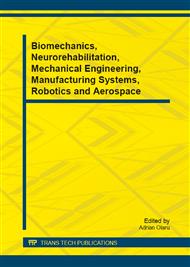p.197
p.203
p.209
p.215
p.220
p.227
p.235
p.241
p.247
Productive Performance Analysis in Machinery Industry Using Malmquist Index
Abstract:
Finding productive performance of a producer is a topical issue on the basis of which has been and are done a large number of research. Currently there are several productive performance measurement techniques detailed in various forms, among which the most used are the efficiency and the productivity. The work presents the comparative measurement of the efficiency and productivity for a processing activity of specific products from machines constructions, organized in several enterprises in the area of N-V of Romania, between the intervals 2005-2010. This study uses data envelopment analysis (DEA) to measure the utilization capacity in six enterprises. Malmquist index method used in this research indicates that there is the tendency to increase or decrease the productivity and efficiency of the studied enterprises. Identification of positive or negative trend productive performance can be used to prepare a strategy of reducing inefficiencies and improving effectiveness of production process. Specifically, this study quantifies the level of technical efficiency and technical change in this particular manufacturing sector.
Info:
Periodical:
Pages:
220-226
Citation:
Online since:
December 2012
Authors:
Price:
Сopyright:
© 2013 Trans Tech Publications Ltd. All Rights Reserved
Share:
Citation:


